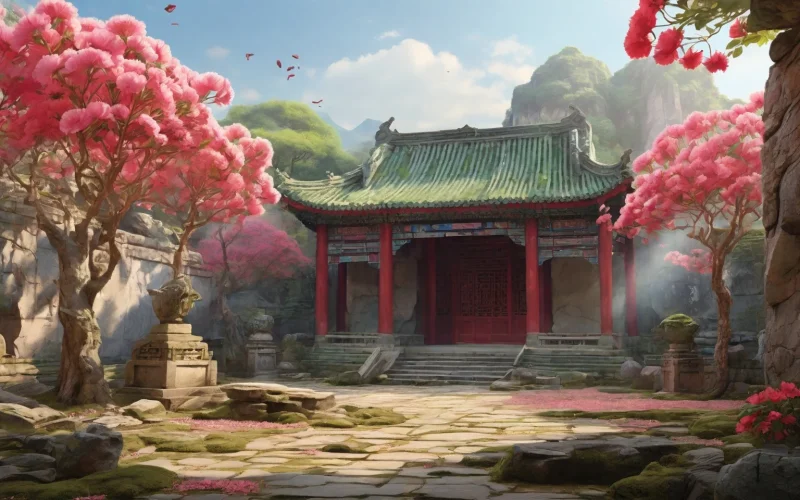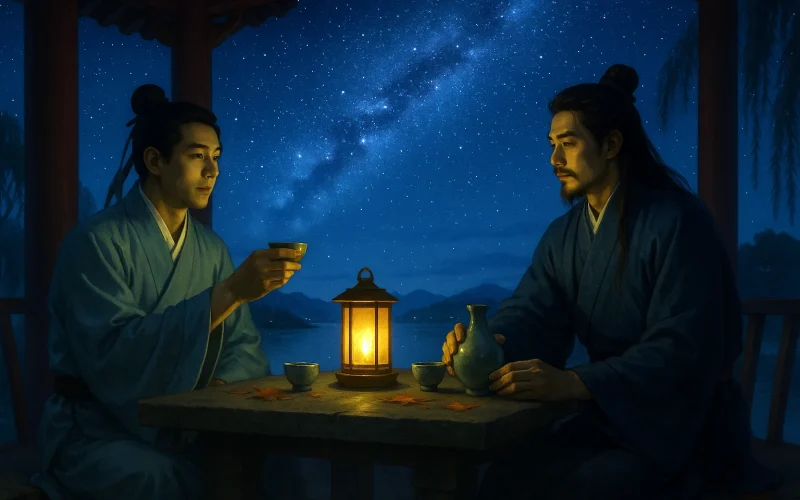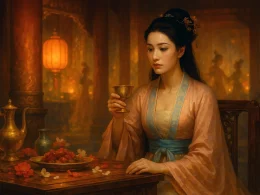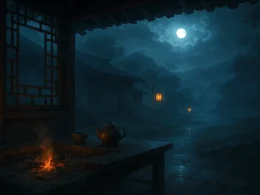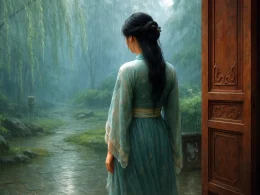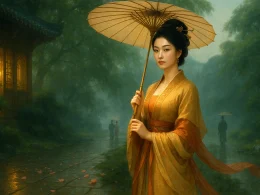Since we parted in mountains lone,
We meet again where temple bells intone.
High and low, leaves burst in view,
Light and dense, none grows askew.
Wild butterflies yield in white,
Courtyard pomegranates blush less bright.
Who knows these blooms last longest?
From spring dew to autumn’s gust.
Original Poem
「云阳寺石竹花」
司空曙
一自幽山别,相逢此寺中。
高低俱出叶,深浅不分丛。
野蝶难争白,庭榴暗让红。
谁怜芳最久,春露到秋风。
Interpretation
This poem was composed by Sikong Shu upon encountering carnations (石竹花) at Yunyang Temple during his travels. Wild-grown and unassuming yet steadfast in character, these blossoms thrived quietly in the temple's serene surroundings, resonating deeply with the poet's state of mind—whether journeying or dwelling in mountain seclusion, his tranquil spirit found kinship with these modest, elegant flowers that shunned ostentatious beauty. The work celebrates both resilient virtue and reclusive tranquility, mirroring the poet's own idealized ethos.
First Couplet: “一自幽山别,相逢此寺中。”
Yī zì yōu shān bié, xiāngféng cǐ sì zhōng.
Since parting ways in secluded hills, / We meet again within this temple's bounds.
The opening establishes the central theme: carnations transplanted from wilderness to temple are greeted like old friends, blending surprise and tenderness. "Secluded hills" versus "temple" highlights the flower's quiet transcendence, while subtly reflecting the poet's own detachment—a kindred spirit dwelling beyond worldly dust.
Second Couplet: “高低俱出叶,深浅不分丛。”
Gāodī jù chū yè, shēnqiǎn bù fēn cóng.
Leaves emerge regardless of height or depth, / Clusters blend seamlessly, no distinction made.
This couplet captures the flowers' unstudied growth—neither artificially pruned nor rigidly ordered, much like noble character that flourishes without hierarchy. "No distinction" (不分丛) and "leaves emerge" (俱出叶) quietly extol the beauty of equality and natural spontaneity.
Third Couplet: “野蝶难争白,庭榴暗让红。”
Yě dié nán zhēng bái, tíng liú àn ràng hóng.
Wild butterflies cannot rival their white, / Pomegranate blossoms concede their red.
Here, color becomes a contest of virtue: the carnations' white outshines butterflies, their red humbles pomegranates. "Cannot rival" (难争) and "concede" (暗让) personify nature, animating the flowers' unassuming radiance—a metaphor for integrity that shines without seeking attention, embodying "clarity without ostentation, brilliance without vulgarity."
Fourth Couplet: “谁怜芳最久,春露到秋风。”
Shuí lián fāng zuì jiǔ, chūn lù dào qiūfēng.
Who notices their fragrance lasts longest, / From spring dew to autumn's withering winds?
The closing couplet measures beauty in endurance rather than fleeting glamour. Though these flowers avoid early spring's spotlight, their scent persists across seasons—a testament to steadfastness and quiet dignity. "Spring dew to autumn winds" frames three seasons, underscoring resilience against transience, while echoing the opening's "secluded hills" and "temple" to reinforce the poem's ode to humble constancy.
Holistic Appreciation
This poem uses the form and nature of the carnation flower to express the poet's admiration for the beauty of nature and the ideal of human character. Through four aspects—the flower's origin, posture, color, and seasonal timing—it unfolds layer by layer, closely capturing the essence of carnations to form a simple, elegant, and unadorned picture. The poet avoids heavy embellishment, employing only light, understated brushstrokes and tranquil language to depict the flower's enduring fragrance and unassuming beauty, which mirrors the poet's own moral integrity and sentiments, creating a genuinely moving and spiritually refreshing effect.
Artistic Merits
- Expressing Feelings Through Objects: The entire poem uses the carnation as a metaphor to convey ideals of character and natural charm.
- Simple Language, Profound Meaning: The language is plain and natural, yet layered with emotion and philosophical insight.
- Tight Structure, Progressive Layers: Each of the four couplets addresses the flower's origin, growth, color, and blooming season, presenting a clear and logical progression.
- Fusion of Scene and Emotion: Feelings arise from the scenery and are embedded in the object, with the external environment and inner mind reflecting each other.
Insights
This poem teaches us that truly moving beauty lies not in momentary dazzle but in enduring fragrance and quiet blossoming. The quiet resilience of the carnation mirrors the spiritual qualities one should possess—eschewing clamor and vanity, staying true to oneself, and enduring solitude to achieve lasting grace. In a restless world, we should cherish this gentle yet steadfast spirit, which persists "from spring dew to autumn wind."
About the poet
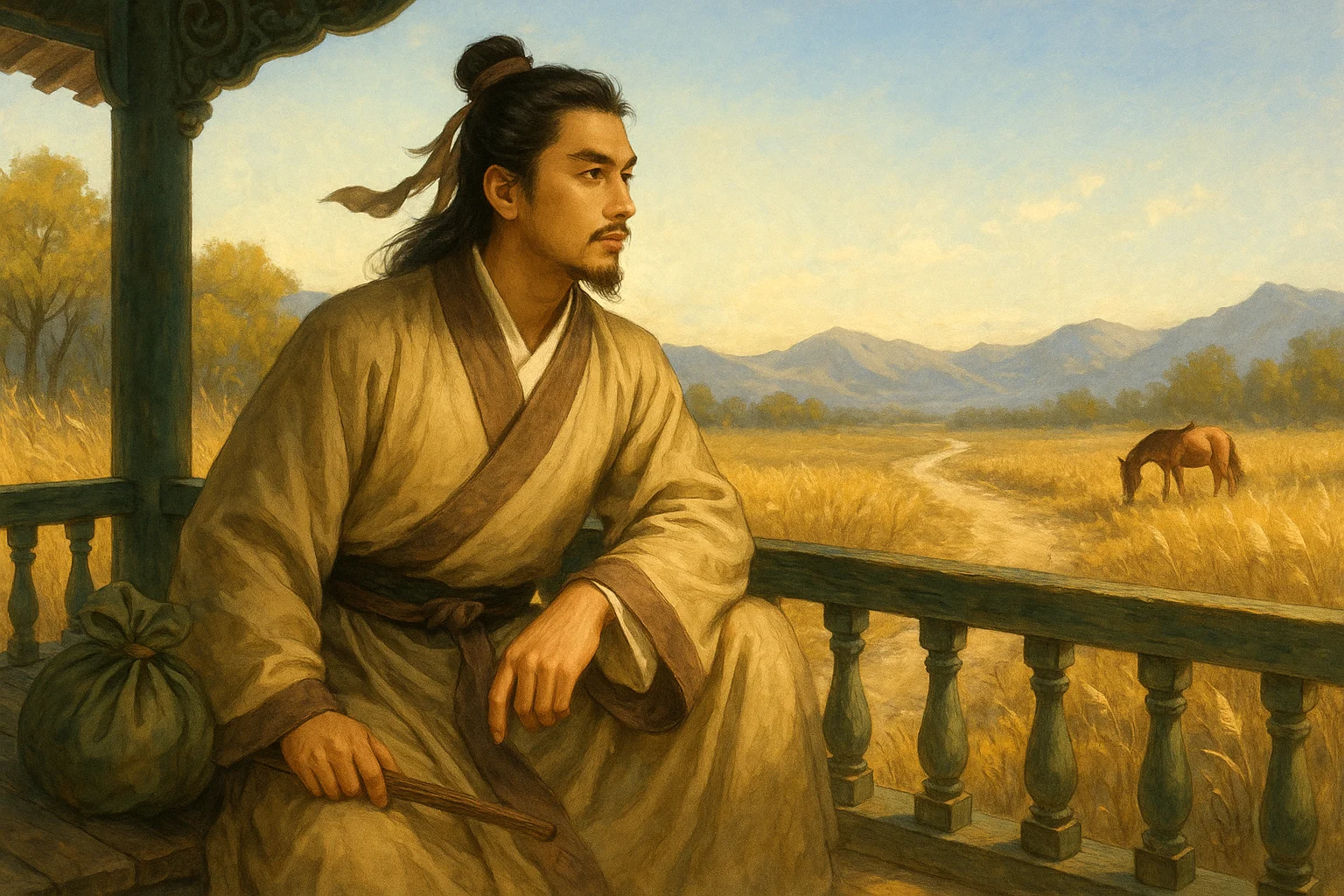
Sikong Shu (司空曙), c. 720 – c. 790, courtesy name Wenming, was a native of Guangping (present-day Yongnian County, Hebei Province). A renowned mid-Tang dynasty poet, he was one of the "Ten Literary Masters of the Dali Era," alongside Lu Lun, Qian Qi, Han Hong, Li Duan, and others. Though his life lacked illustrious achievements, his poetry—marked by genuine emotion in simplicity and profound contemplation in solitude—secured him a unique place in mid-Tang literary circles.






